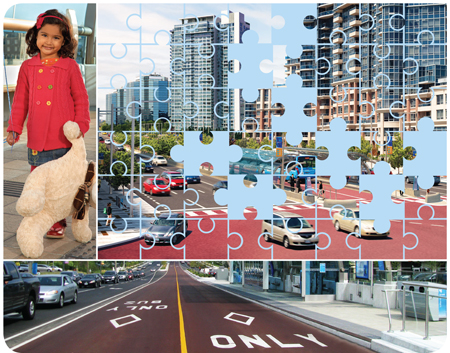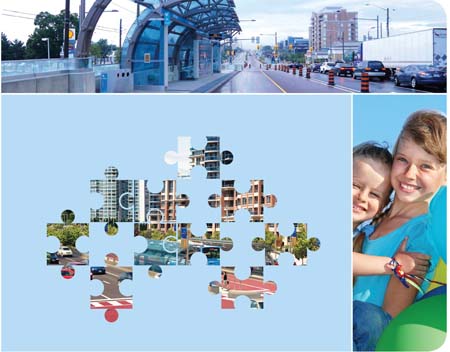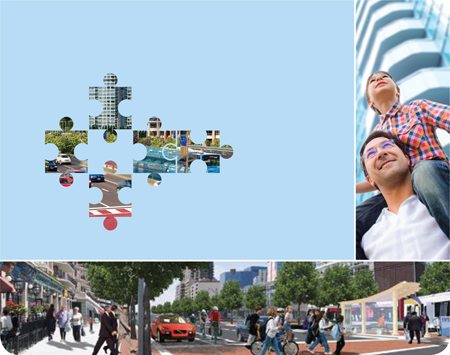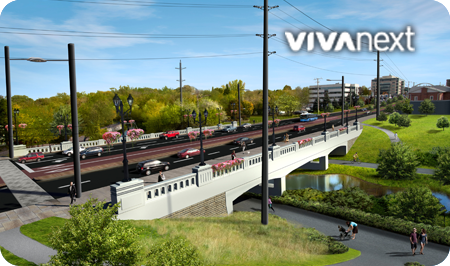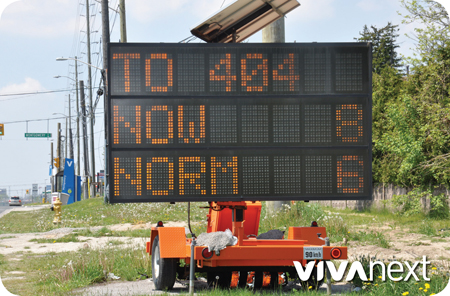As I’ve posted previously, Bus Rapid Transit is an increasingly popular rapid transit technology around the world [Bus Rapid Transit: growing around the world, Bus Rapid Transit: South America leads the way]. One of the ways to make BRT truly rapid, as we’re doing here in York Region, is to provide vehicles with separate lanes so they can move easily through congested areas. And one way to make those lanes distinct without having an actual grade separation (which would require extra room as well as be much more costly) is to make them a different colour. This is why the vivaNext rapidways are bright red, as you’ll have seen if you’ve driven along Highway 7 East recently. These red lanes are for viva transit vehicles only and cars need to be careful not to drive into them for everyone’s safety.
But colouring asphalt anything other than basic black isn’t as easy as you might think. Here’s what we’ve done to get our rapidways red.
Painting asphalt isn’t an option. Although it’s something we all take for granted, creating a long-lasting, durable asphalt mix for the conditions along a busy roadway like Highway 7 is actually a highly specialized science. The surface on roadways that carry a lot of heavy traffic, especially traffic that is constantly turning and braking or accelerating at intersections, needs to be exceptionally strong to prevent cracking, rutting and shifting. Canadian climate conditions including extreme temperature changes, hot sun, frost, and salting over the winter, all impose significant challenges. Creating an asphalt mix to take these conditions without requiring frequent maintenance is something that specialized pavement designers work long and hard to achieve, with the technology constantly evolving.
So adding in the requirement to make it a distinct colour definitely adds to the complexity.
Using red pavers or bricks would not provide a sufficiently durable driving surface long term, and would be extremely costly to install and maintain. One approach that is used when the colour is needed in very limited areas, such as crosswalks or bike lanes, is a material called “street print”. But this material, which is actually a special top layer that’s heated right into the asphalt once it has been imprinted with a brick or paver pattern, would be too complicated to use along the full length of the rapidways (although we are using it for our crosswalks), and again would not be durable enough.
So the best approach is to tint the black asphalt, which we’re accomplishing in a couple of ways. Asphalt is composed of a mixture of sand, stones and asphalt cement binding it together. By adding reddish stones rather than grey ones, we can give an underlying red tint to the asphalt, especially as it wears.
The more complex adjustment is to add a special red pigment. The challenge with the pigment is to be careful in how much we add: too little and the colour doesn’t come through, but too much and the overall durability of the asphalt might be compromised. The pavement design team has worked long and hard through a highly technical process to get the balance just right.
We’re delighted with their final results, which will give us what we need: a clearly defined rapidway that stands out from the regular traffic lanes, with a long-lasting and durable surface, at an affordable price. Drivers need to remember as they make turns from side streets along Highway 7 to follow the white skip lines and not turn onto those red rapidways! Although beautiful, they are red for safety too!

